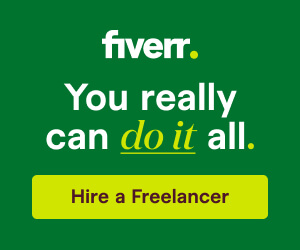The internet has democratized entrepreneurship in ways unimaginable a decade ago. You no longer need expensive software or technical expertise to build a profitable online business. I discovered this truth when I transformed a collection of free tools into a consistent income source that now generates over $3,000 monthly. The journey wasn’t magical – it required strategy, persistence, and creative thinking about resources most people overlook.
My starting point was identifying marketable skills I already possessed. After years of helping friends with basic graphic design, I realized this casual ability could become profitable. The breakthrough came when I stopped thinking about tools I couldn’t afford and focused on what was freely available. Canva became my design powerhouse, replacing expensive Adobe subscriptions with its robust free tier. The secret lay not in the tool itself, but in how I positioned my services.
Research revealed small businesses desperately needed social media graphics but couldn’t justify hiring expensive agencies. I created sample designs showcasing what free tools could produce and pitched local businesses. My unique selling point became “professional quality at DIY prices” – a message that resonated with budget-conscious entrepreneurs. The first client paid $50 for a set of Instagram posts, proving the concept had merit.
Content creation tools formed the backbone of my service offering. CapCut handled video editing without watermarks, while Photopea served as my free Photoshop alternative. These tools had limitations compared to premium software, but most clients couldn’t tell the difference in final deliverables. I turned these constraints into advantages by developing signature styles that worked within the tools’ capabilities.
Automation transformed my side hustle into a scalable business. Zapier’s free plan connected my Google Forms for client requests directly to Trello boards where I managed projects. When a client submitted design needs, the information automatically populated my workflow system. This eliminated hours of administrative work and reduced errors in client communication.
Client acquisition started with organic outreach but quickly scaled through free marketing tools. I created portfolio pieces using my free design stack and shared them in relevant Facebook groups and subreddits. Answering design questions in these communities established my expertise while subtly showcasing my capabilities. The key was providing genuine value first – sales followed naturally from demonstrated competence.
Payment systems required careful consideration to avoid eating into slim margins. PayPal’s free business account handled transactions without upfront costs, taking only a small percentage per sale. For recurring clients, I implemented a retainer model through Wave’s free invoicing system, creating predictable income streams. These financial tools gave my operation professional infrastructure without expensive subscriptions.
Productizing my services marked a turning point in profitability. Instead of custom quotes for every project, I created standardized packages with clear deliverables and pricing. A “Social Media Starter Kit” included ten posts for $150 became my bestseller. Packaging services this way reduced client negotiations and made production more efficient through reusable templates.
Scaling the business meant finding ways to serve more clients without proportional time investment. I developed template systems where I could swap colors and text for different businesses while maintaining quality. Google Drive became my free client portal, where customers accessed their files through organized folders. This system allowed me to handle multiple clients simultaneously without chaos.
Upselling opportunities emerged as client relationships developed. A bakery initially ordering Instagram posts later needed menu designs – work I could complete using the same free tools. By demonstrating reliability on initial projects, I became their go-to for all design needs. These expanded engagements increased revenue without additional marketing costs.
Referrals became my most valuable lead source, powered by free CRM tools. HubSpot’s free version helped me track client relationships and set reminders for follow-ups. A simple “thank you” email with a referral incentive generated new business consistently. The system worked because I’d built genuine relationships rather than treating clients as transactions.
Analytics guided my business decisions without expensive software. Google Sheets tracked which services sold best and which clients provided the highest lifetime value. Instagram Insights showed which portfolio pieces attracted the most engagement, informing what to showcase prominently. These free metrics revealed patterns I used to refine my offerings continually.
The psychological shift from “free means inferior” to “free means opportunity” changed everything. I stopped envying competitors with expensive tools and instead focused on maximizing what I had. This mindset uncovered creative solutions – like using Google Slides for basic animation when I couldn’t afford premium software. Clients cared about results, not the tools behind them.
Seasonal trends became predictable income boosters. Restaurants needed holiday promotions, coaches wanted New Year’s content, and retailers required back-to-school graphics. Anticipating these needs allowed me to create template packages in advance and market them when demand peaked. Free scheduling tools like Later helped me time these promotions perfectly.
Collaborations expanded my reach without advertising costs. I partnered with copywriters and web developers, offering design services to their clients. These strategic alliances brought in projects I couldn’t have landed alone. Simple contract templates from free legal resources protected all parties in these arrangements.
Education became my secret weapon for standing out. I created free tutorials showing small businesses how to use basic design tools themselves. This generous approach paradoxically increased paid work – clients who saw my expertise wanted me to handle their projects despite learning the basics. Teaching established me as an authority rather than just another freelancer.
The business model’s beauty lies in its sustainability. Without software subscriptions draining profits, my margins remained healthy. Low overhead meant I could price competitively while still earning well. As income grew, I selectively invested in a few premium tools that offered clear returns, but the foundation remained free resources.
Automating client onboarding created efficiency. A free Typeform questionnaire gathered project details, while a Notion template turned responses into project briefs. These systems reduced back-and-forth emails and ensured I never missed crucial client requirements. Process documentation meant I could eventually outsource steps without quality dropping.
Quality control happened through free tools as well. Grammarly checked all client communications, and Canva’s brand kit feature maintained consistency across projects. These safeguards prevented amateur mistakes that could undermine perceived value. Attention to detail in small things built trust for bigger projects.
The evolution from side hustle to full-time business happened gradually. My first month earned $200, but systems refinement and reputation building increased that steadily. After six months, the income replaced my part-time job. At twelve months, it surpassed my previous full-time salary. All built on tools anyone can access without investment.
Scaling limitations became apparent as demand grew. The solution came from training virtual assistants on my free tool stack. Recording my processes with free screen capture software created training materials. Now a small team handles production while I focus on strategy and client relationships – all still using primarily free resources.
The most valuable lesson was that constraints breed creativity. Limited tools forced innovative solutions that became unique selling points. What began as financial necessity became a competitive advantage – my designs had a distinctive style because they emerged from unconventional tools. Clients appreciated this originality in a sea of generic templates.
Future growth plans leverage this same philosophy. I’m developing digital products using free tools to create them, which will generate truly passive income. The systems and reputation built through service work now provide a platform for scalable product offerings. The journey continues proving that resourcefulness outweighs resources when building an online business.








